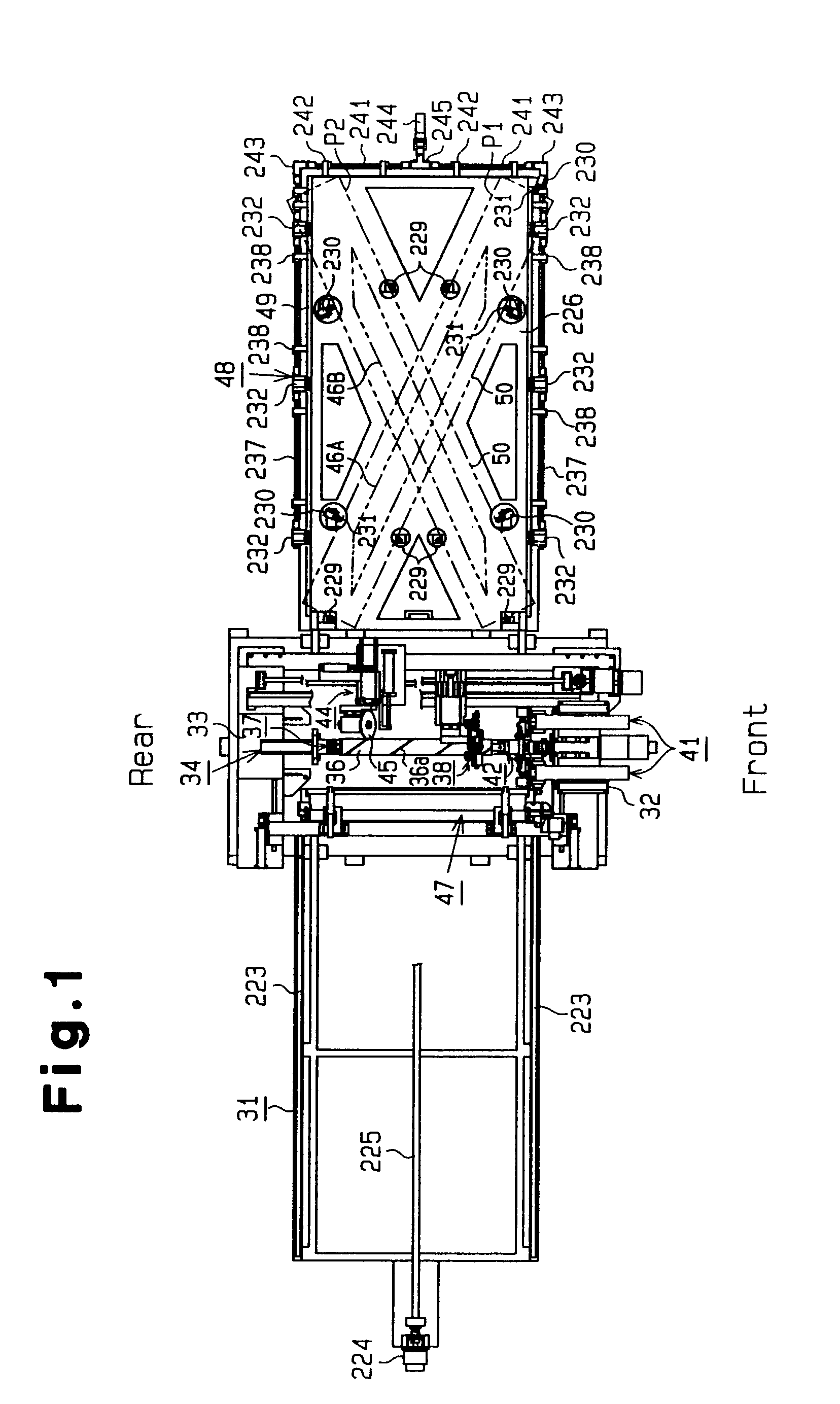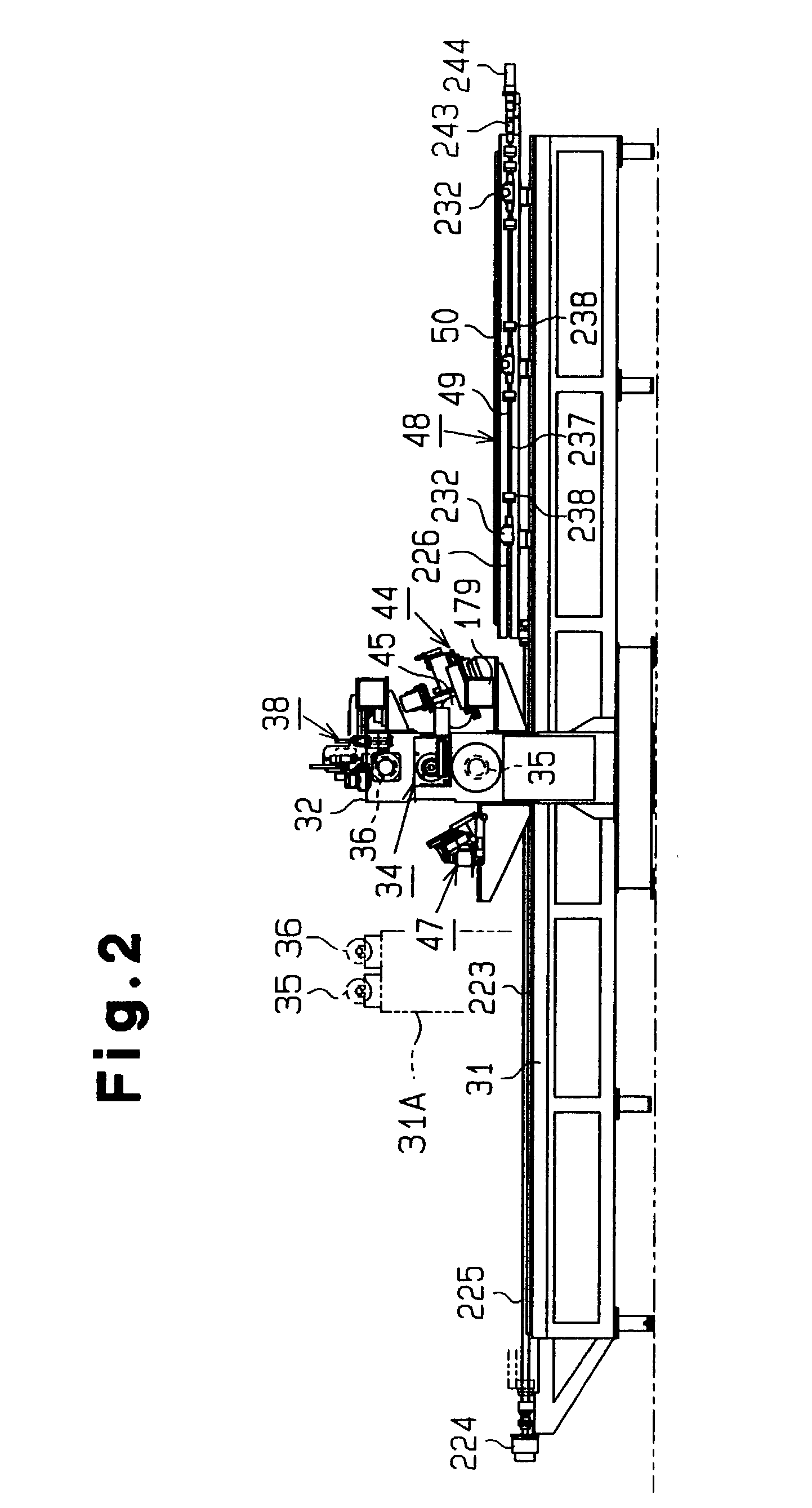Method and device for manufacturing belt material for tire
a belt material and tire technology, applied in the field of tire belt material manufacturing method and device, can solve the problems of large machine not being able to manufacture multiple inability of a single machine to manufacture two types of belt materials, and inability to reduce installation space, so as to reduce manufacturing costs and reduce installation spa
- Summary
- Abstract
- Description
- Claims
- Application Information
AI Technical Summary
Benefits of technology
Problems solved by technology
Method used
Image
Examples
embodiment
(Effects of Embodiment)
[0136]Effects expected by the foregoing embodiment will be described below.
[0137](1) The ribbon 39 formed of a plurality of cords 39a arranged longitudinally and covered with the rubber 39b is spirally wound around the outer peripheral surfaces of the drums 35, 36 at predetermined pitches T1, T3. The side edges of the wound ribbon 39 are stuck to each other to form the cylindrical wound bodies 40. The wound bodies 40 are spirally cut at predetermined pitches T2, T4, larger than the winding pitches T1, T3 of the ribbon 39 to form the belt materials 46A, 46B which have the predetermined widths W1, W2, and different cord inclination angles β1, β2 in different arrangement directions. Thus, a space for installing the device for manufacturing the belt materials can be reduced.
[0138](2) The outer diameters D1, D2 of the drums 35, 36, and the width E, winding pitches T1, T3 and number N of windings of the ribbon 39, and the spiral cutting pitches T2, T4 of the wound b...
PUM
| Property | Measurement | Unit |
|---|---|---|
| Length | aaaaa | aaaaa |
| Pressure | aaaaa | aaaaa |
| Angle | aaaaa | aaaaa |
Abstract
Description
Claims
Application Information
 Login to View More
Login to View More - R&D
- Intellectual Property
- Life Sciences
- Materials
- Tech Scout
- Unparalleled Data Quality
- Higher Quality Content
- 60% Fewer Hallucinations
Browse by: Latest US Patents, China's latest patents, Technical Efficacy Thesaurus, Application Domain, Technology Topic, Popular Technical Reports.
© 2025 PatSnap. All rights reserved.Legal|Privacy policy|Modern Slavery Act Transparency Statement|Sitemap|About US| Contact US: help@patsnap.com



